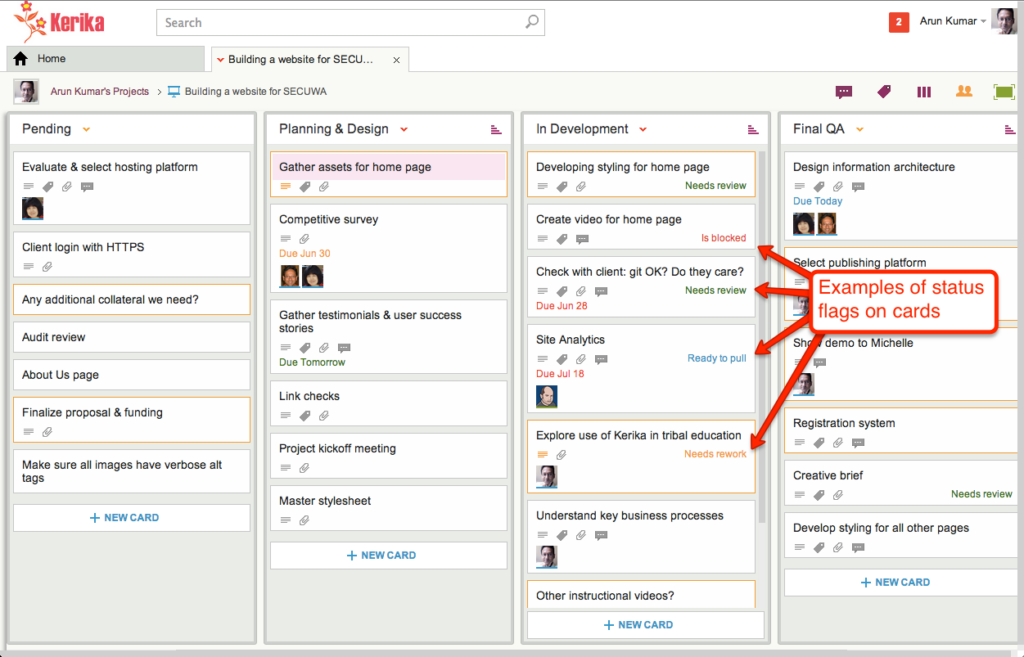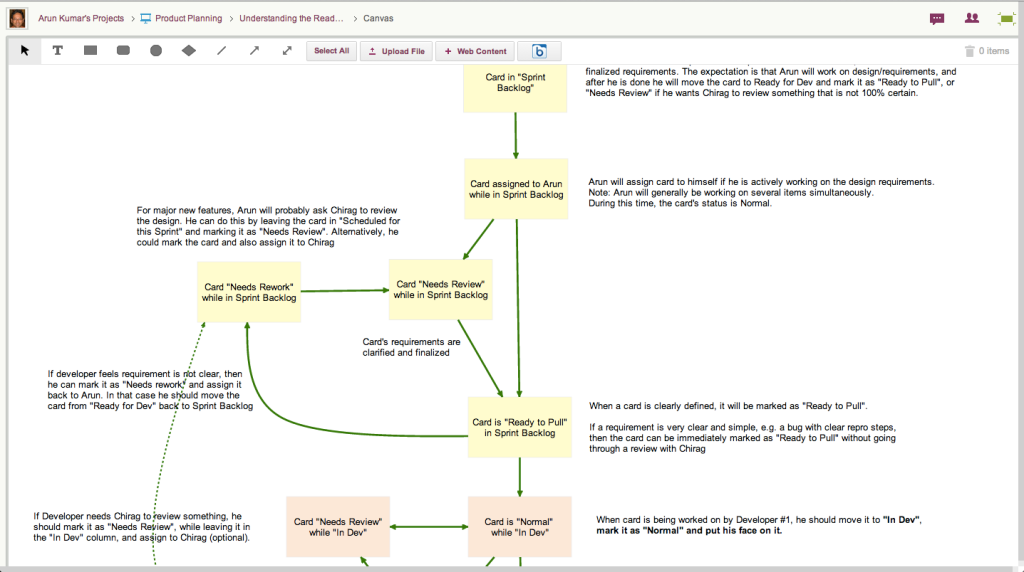We got an email this morning from a user that we decided to answer here, because the topic is relevant to many of our old users…
We are wondering what the differences between Box vs Google are going to be. Also, if we move over to a Kerika+Box account, will we have to rebuild what we have set up in Kerika+Google?
To answer the first question: the Kerika user interface is the same, whether you use Kerika+Box or Kerika+Google.
And, we fully intend to keep the user interface the same across these two cloud storage platforms — and any others that we might support in the future.
That said, the Kerika user experience, which is more than just the user interface, is a little different due to the quirks of Box vs. Google.
For example, Box makes it really easy to sign up as a new user, and keep your old email account. You can do that with Google, too, but it’s a lot more cumbersome.
Box also works really well with Microsoft Office files: Box doesn’t try to convert your files into it’s own proprietary format, i.e. it doesn’t have its version of Google Docs, so if you like working with Microsoft Office, Kerika+Box is probably the better choice.
(Note: it’s possible to use Kerika+Google and not have your files converted to Google Docs, by setting a user preference, but that kind of misses the point of using Kerika+Google in the first place…)
If you like to view and edit your files right in the browser, then Kerika+Google is the better choice because Google Docs is getting better all the time.
For both Kerika+Google and Kerika+Box, we try to make sure all your Kerika-related files are neatly stored within your own cloud platform, but that’s a little better on Kerika+Google than with Kerika+Box:
Google allows Kerika to create as many nested folders as we need, which means that you only see a top-level folder called “Kerika.com” when you view your Google Drive, and all your projects, across all the accounts you work with, are all stored inside here.
Box doesn’t allow us to create nested folders in the same way, so you will see a lot more top-level folders in your Box account as your Kerika collaboration network grows.
So, the same user interface for both Kerika+Google and Kerika+Box, but a slightly different user experience with pros and cons for both Google and Box.
And the user interface will remain the same in the future: we have no intention of adding features that will only work with Google or Box — only features that will work well with both.
Now, for the second question: if you create a new Kerika+Box account, you will need to create new projects in this account because it is not connected in any way to your Kerika+Google account.
This may be a bummer for some of our old users who have a lot of projects built up using their Kerika+Google accounts, and now want to switch over to using Kerika+Box.
The reason this limitation exists is that the underlying cloud platforms are completely different, and come from two companies that are competing with each other rather than collaborating in any way.
This makes is impossible for us to move content from a Kerika+Google account over to a new Kerika+Box account, even if they are owned by the same user, since even if we tried to move over all the cards, boards and canvases, we wouldn’t be able to automatically move over any related files.
Sorry about that :-(



